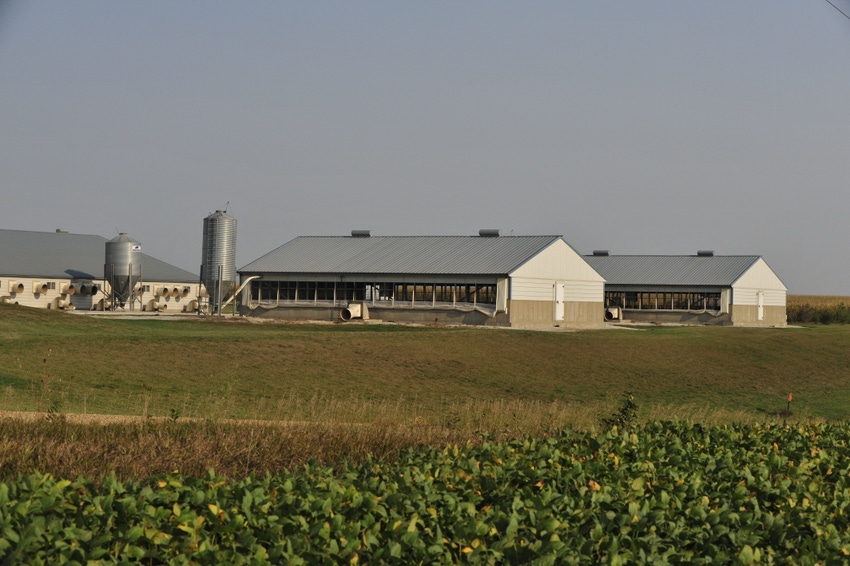Iowa Pork invests in continued water quality progress 23423
IPPA has provided $25,000 to IDALS to be used for various projects over the next year. The funds will help offset up to 50% of the costs for pig farmers to install saturated buffers or bioreactors on their farm land.
April 9, 2018

Source: Iowa Pork Producers Association and Iowa Department of Agriculture and Land Stewardship
The Iowa Pork Producers Association is once again partnering with the Iowa Department of Agriculture and Land Stewardship to offer funding for pig farmers interested in new nutrient loss reduction technologies.
IPPA has provided $25,000 to IDALS to be used for various projects over the next year. The funds will help offset up to 50% of the costs for pig farmers to install saturated buffers or bioreactors on their farm land. Preference will be given to sites that provide the greatest opportunity for nitrate reduction and be geographically dispersed throughout the state to aid in education and demonstration opportunities.
“This additional $25,000 investment by the Iowa Pork Producers Association will help support our efforts to scale-up the adoption of these edge-of-field practices focused on improving water quality. Both bioreactors and saturated buffers are still fairly new practices and this investment will help us continue to place these practices throughout the state to show farmers how they might fit in their operation,” says Mike Naig, Iowa Secretary of Agriculture. “Thank you to the Iowa Pork Producers Association for continuing to invest in the water quality efforts in our state.”
Participating producers will be asked to share information and experiences with other farmers through IPPA and IDALS programs.
Hog farmers interested in the program can submit basic farm information for project consideration by clicking here. For more information, contact either Tyler Bettin at IPPA at 800-372-7675, or Matt Lechtenberg at IDALS at 515-281-3857.
“IPPA is very pleased to continue this successful partnership with the Iowa Department of Agriculture and Land Stewardship. While these are not specific practices to livestock, we know public/private partnerships such as this continue to drive momentum of the Iowa Nutrient Reduction Strategy,” says 2018 IPPA President Gregg Hora, a producer from Fort Dodge. “Efforts from the 2017, and now 2018 funding, will allow enhanced demonstration of these projects across the state while continuing to move the needle on water quality improvements.”
Bioreactors are excavated pits filled with woodchips, with tile drainage water flowing through the woodchips. As water from the tile line passes into the bioreactor, denitrifying bacteria converts nitrate into di-nitrogen gas.
Saturated buffers divert water flowing through underground tile lines into buffers along a river or stream, aiding nutrient removal before the water enters the waterway. This new offering from IPPA builds on its continuing efforts in support of the Iowa Nutrient Reduction Strategy, including cover crop research, field day support and educational outreach.
“Through funding of this effort, support of the Water Quality Initiative, continued investments in the Iowa Agriculture Water Alliance and many other projects, Iowa pork producers remain committed to continuous improvement and practice adoption, while also celebrating tremendous positive strides that have been made over previous decades,” Hora says. “Pig farmers take environmental management and regulations designed to protect our natural resources very seriously. Today’s barns contain all manure to be used as crop nutrients and are designed to protect our rivers, streams and drinking water.”
The Iowa Nutrient Reduction Strategy science assessment cites an average 4% reduction in nitrate loss and up to 46% reduction in phosphorous loss when using swine manure as a nutrient source compared to commercial fertilizer, while also having positive impacts on soil organic carbon, soil structure and runoff. Research from the University of Arkansas shows that efficiencies of modern pork production enabled pig farmers to reduce water use 41%, land use 78% and carbon footprint 35% from 1959-2009.
You May Also Like



